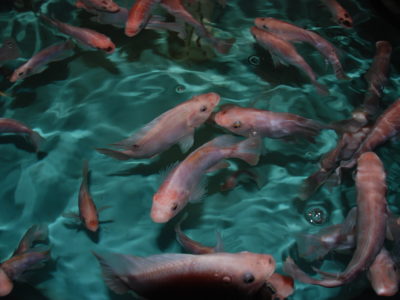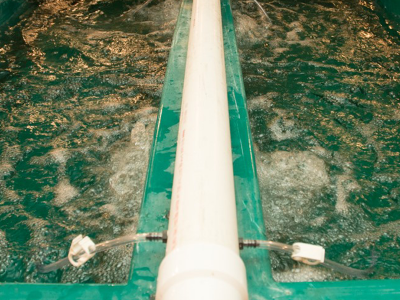Responsible Aquaculture: CSIF Highlights Best Management Practices
01-30-2015 in Aquaculture
As aquaculture makes a splash in Iowa, it’s important for producers to focus on neighbor relations and brush up on the rules that regulate this growing livestock industry.
“Whether you’re a new producer or an existing farmer, it’s wise to plan for growth,” said Brian Waddingham, executive director of the Coalition to Support Iowa’s Farmers (CSIF). “CSIF is here to help you do things right.”
CSIF continues to receive more calls from young producers interested in aquaculture. Siting a new operation is a key consideration, said Waddingham, who encourages producers to start by contacting CSIF. “Every farm is unique. We’ll help you learn about the rules and regulations that apply to your aquaculture operation.”
An aquaculture unit license from the Iowa Department of Natural Resources (DNR) is required to buy, sell or trade fish in Iowa. In addition, producers may need an importation permit from the DNR, depending on the species involved.
Aquaculture nutrient management regulations follow many of the same rules that apply to other livestock operations. These regulations are based on the number of animal units. Since one fish correlates to 0.001 animal unit, an aquaculture operation with 499,999 fish will keep the operation below the 500-animal-unit threshold, Waddingham said. “If you raise two species on your farm, such as hogs and fish, the animal units from each operation are counted together,” he added.
Aquaculture operations under 500 animal units must:
- Be situated 500 feet back from a creek or grass waterway if it has a cut through it
- Be located 100 feet back from a deep well or 200 feet from a shallow well
The producer must also check for alluvial or karst soils before siting the operation. “Overall, there’s not a lot of permitting required if you’re under 500 animal units,” said Waddingham, although he noted that a stormwater discharge permit may be required for operations of this size, in some cases.
Aquaculture operations of 500 to 1,000 animal units must:
- Develop a manure management plan.
- Follow additional separation distances from residences, churches, businesses, schools, public-use areas and public roads.
In any aquaculture operation, getting rid of the waste water is another key consideration. Consider the nutrient analysis, acres needed and method of application, said Waddingham, who encourages producers to contact CSIF for more details.
Also, realize that neighbors may have concerns about a new aquaculture operation, since aquaculture facilities look similar to hog barns from the outside. “As you plan a new aquaculture operation, you don’t have to ask your neighbors for permission, but it’s a good idea to keep them informed,” Waddingham said.
CSIF can advise on all these issues, added Waddingham, who noted that CSIF’s services are free and confidential. “We’re a one-stop shop, and our goal is to help farmers succeed.”
To watch the video from the Iowa Aquaculture Conference, visit www.supportfarmers.com/aquaculture.
About the Coalition to Support Iowa’s Farmers
The Coalition to Support Iowa’s Farmers has helped more than 2,800 livestock and poultry farm families over the past 10 years successfully and responsibly grow their farms. CSIF helps families interpret rules and regulations, site new livestock and poultry barns, enhance relationships with neighbors, and implement best management practices for livestock and poultry farmers across the state of Iowa at no charge. For more information, call 800-932-2436 or visit www.supportfarmers.com
Recommended News

How Aquaculture Growth in Iowa Supports Economy, Creates New Jobs for Farmers
Iowa is one of the many states benefiting from its growing aquaculture industry. According to the Iowa Department of Agriculture, aquaculture generated more than $3.8 million in sales in Iowa...
Read More
CSIF Event Showcases Iowa’s Emerging Aquaculture Industry
The 2022 Aquaculture Conference, hosted by the Coalition to Support Iowa’s Farmers (CSIF), recently drew more than 100 attendees to learn more about Iowa’s newest livestock industry.
Read More
Leading by example
WEST DES MOINES, IOWA – September 19, 2019 – Livestock production is important to Iowa’s economy, contributing $48.5 billion to the state annually, up more than $17 billion from the...
Read More